From the SWISS BULLETIN: Evidence of mules in ancient times, Part 1
I hope all of our friends and fans will enjoy yet another translated historical Longears article written by Elke Stadler, originally printed in German in the SWISS BULLETIN that comes to us from Switzerland. More articles to follow!
By Elke Stadler
The French national stud farm had a collection of different documents compiled to determine the profile of mules in ancient times. One particular difficulty was that the historical evidence was all too often misinterpreted. Often the mules were confused with their parents, horse or donkey, or generalized as such. Furthermore, the term “lumenti” (beast of burden) was often used, which was then understood as “mare” or “horse”. Therefore, a large quantity of historical, iconographic and archaeological data had to be examined in order can clearly define the physical characteristics.
Historical sources
The agricultural and veterinary studies of the ancient authors, from Columella, Pliny, Palladius to Vegetus, show how accurate the knowledge of the mule was, from breeding to handling, and they highlight all its advantages. Historians like Suetonius, the Roman poet Martial or the Greek Aesop show the widespread use of the mule in their fables.
Iconographic sources
Iconography (the science of the interpretation of motives in works of art) has collected numerous proofs of the existence of mules since the earliest antiquity. These are engravings, drawings, illustrations on vessels, reliefs and figures, which can be seen on buildings and monuments in various countries or are exhibited in museums. Bones and teeth have been found and analyzed during excavations. Some of the interesting mule representations and archaeological finds are presented here:
A depiction of an engraved mule from the Assyrian period shows that mules already wore richly decorated harness with metal or textile ornaments (pompons) in this period. (in: John Clark Ridpath Cyclopedia of Universal History Cincinnati: The Jones Brothers Publishing CO., 1885).
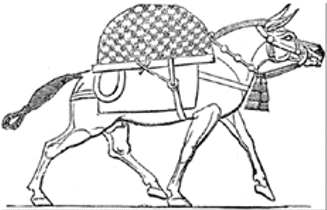
Picture on a vase with red figures representing a loaded mule. (in: P. Hartwig, Die griechischen Meisterschalen, Berlin 1883, p. 63).
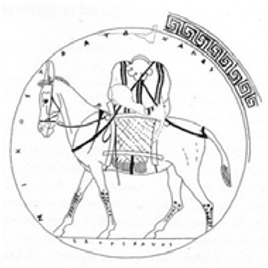
Drawings that clearly show the basic equipment of a mule with military equipment: Baskets on both sides to balance the weight (the basket is deliberately drawn flatter and wider to make the contents visible) and the bridle to guide the mule.

Ladies riding mules. Greek-Persian relief, Erdemli Yörük Museum, Province Mersin, Turkey.
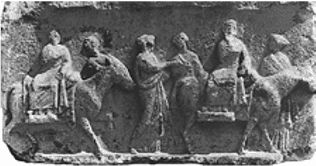
Mule with amphorae. Clay figures from Cyprus, from the time of the Hellenic kingdoms, around the 3rd and 2nd century BC, in the Louvre, Paris.


Mule with handmade saddle. A broken bronze votive plaque found at the height of the Gotthard pass. Archaeological Museum Bavay, France.

A cart pulled by mules. Scene on the Trajan Column, Relief, Archaeological Museum Strasbourg.

An honorary column erected in 112/113 AD for the Roman Emperor Trajan (98-117 AD) at his hometown Rome.
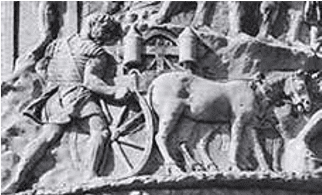
Light two-wheeled cart (open wagon for short distances) pulled by two mules. Relief picture on the reconstructed and colored “Igeler Säule”, UNESCO World Heritage Site. Tomb monument of a rich cloth merchant family, which is in the Rheinisches Landesmuseum Trier, Germany.


Rhyton, single-cornered drinking vessel for drinking sacrifices. Red ceramic figure, ca. 475-450 BC. Pre-Roman necropolis from Casabianda, Corsica. Archaeological museum of the department of Gilort (Jérôme) Carcopino.

Operation of the famous harvesting machine known as the “Trevires” or “Vallus” harvester, described in particular by Plinius. Facsimile of a fragmentary relief found in Buzenol, Belgium.
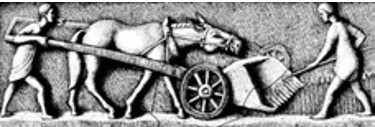
Drawing that brings together two different fragments from the collections of Arlon and Buzenol, showing the farm workers and the mule harvesting spelt with the harvesting machine.



Some numismatic finds: the mule is depicted on many Roman coins, often pulling a two-wheeled carriage (Carpentum). Below: grazing mules, behind them the two shafts of a wagon with reins.
Source:





Carol
March 17, 2020 @ 2:07 pm
This is great – thank you!